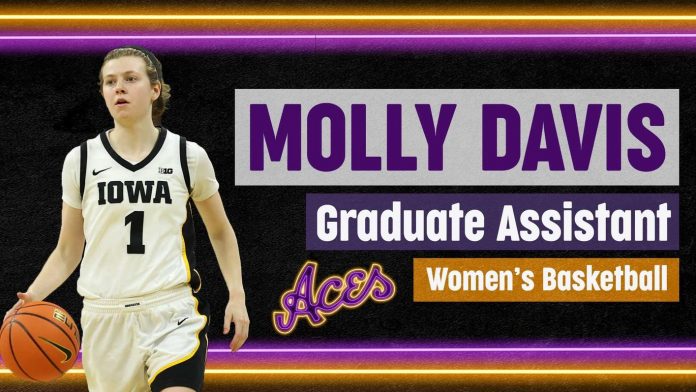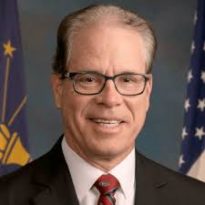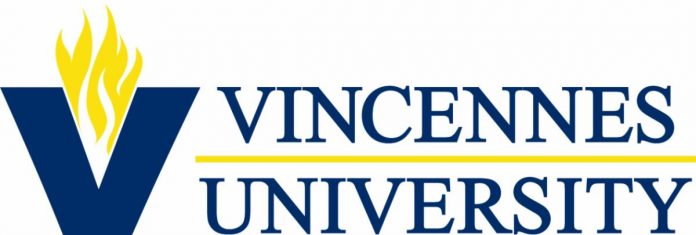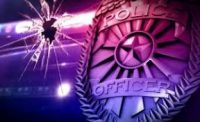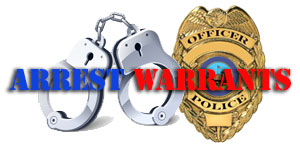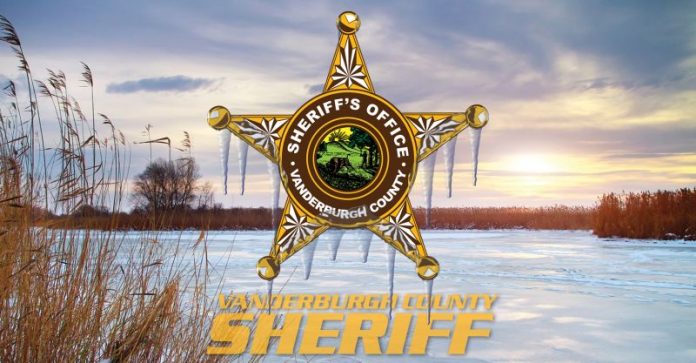LINK OF VIDEO ABOUT GREAT AMERICAN FLAG
BY JOHNNY KINCAID
JUNE 14, 2924
TRANSCRIPT
Happy Flag Day! I always get pumped up about these patriotic holidays because I love this country and our history and we’re going to be talking about the flag today and one flag in particular, which was the Great American flag at the time it was the world’s largest flag and it was sewn together right here in Evansville, Indiana. I have been following the history of that flag. We’ll share that with you. I even know where it’s at today. We’ll also tell you that before the program’s over. So stick around with us for This Week with Johnny Kincaid.
Now, in addition to this being Flag Day today, it’s also the birthday of the United States Army. The Army was formed on June 14th of 1775 and exactly two years later, June 14th, 1777, Congress recognized the American flag and established it in legislation. Here’s what they said in that proclamation. They said that the flag of the 13 United States would be stripes, 13 stripes, alternating red and white and that the Union would be 13 stars, white in a blue field, representing a new constellation. That flag has so much importance. I think it still does today. The symbol of our great nation. And I get kind of infuriated when I see protesters like this have happened recently where they were trying to take the flag down at one of the colleges. And I was cheering for the college students who jumped in to make sure that the flag was raised back up again in its rightful place.
That flag was such an important symbol of our country from the very beginning. You know, with George Washington while they were fighting in Boston, he had troops perched on the highest point in the city of Boston. And then he had them get a 70-foot tall pole and put a flag on the end of it and raise that pole so that that flag could be seen throughout the city. And they were celebrating and cheering the new flag of this nation.
The flag has always been a symbol of our resolve as a nation. As a matter of fact, during the War of 1812, the importance of the flag really came through at Fort McHenry. Now, Fort McHenry was getting ready for a British attack. I mean, the British ships were all moving in toward Chesapeake Bay, and that’s the harbor that Fort McHenry was to protect.
And so they were the guardians of Chesapeake Bay at the time. And their commander, George Armistead, had decided that he wanted the troops to rally around the flag in a big way. So he ordered a big flag. He had a seamstress sew together a flag that was the biggest anybody had ever seen at the time. 42 feet long and 30 feet wide. At that time, we had 15 states, so it was 15 stars, 15 stripes.
This big big huge flag cost them $405 at the time, which some people may have thought was a lot of money to pay for a flag. Armistead got the flag in and they stored it until the right moment. And that moment came on the same night that Francis Scott Key went out to the British ships to negotiate for the return of some prisoners of war. And as Key was being rowed back to Baltimore, that’s when the fireworks began. And as those shells started being fired off, General Armistead then at Fort McHenry had that giant flag raised up the flagpole. Everybody could see it. It was huge. And it was a symbol of our resolve. Francis Scott Key saw it and was amazed, he was in awe as the bombs burst in the air, illuminating that giant flag, and he was so moved that he wrote a poem about it called The Star-Spangled Banner. Now, The Star-Spangled Banner was, for its time, a very powerful poem, but didn’t have any music to go along with it. The music came years later, and the music that they used for our national anthem, as it became in later years, was an old British drinking song. And so they stole the music from the British to turn into what would become our national anthem. And it was adopted by Congress as a national anthem then in 1931. That Star Spangled Banner flag is on display now at the Smithsonian Institute.
Here’s the thing about that flag. It’s shorter than what it was when it originally flew because at that time the family of Armistead actually cut pieces of the flag off, little squares, and either sold them or gave them as gifts for souvenirs. It was pretty customary at that time.
So the flag carried this huge importance during the Civil War. As a matter of fact, the flag grew in popularity to a point where the flag manufacturers couldn’t keep up with the demand. It was the first time during the Civil War; it was the first time that people were actually putting the American flag out on their front porches, just at home. And so the manufacturers were bustling to try to get all of these flags put out. And in the meantime,
The soldiers were dying for that flag. I mean, quite literally, dying for the flag. Here’s the thing, during the Civil War, they used what were called flag bearers. These were the guys who carried the flag ahead of the troops. They were always in the lead. And if you’re carrying that flag running out ahead of the guys with the guns, you don’t have a gun.
You are defenseless and just carrying that flag and guys considered it an honor to be that flag bearer and they would grab the flag and they’d go running ahead of the troops and of course the Confederate soldiers made a target of the flag bearers and they would shoot them and if the flag bearer went down the next closest person to them would run over, throw their gun down, grab the flag and keep moving forward. And if they were shot the same process would happen over and over and over again. Huge, huge significance to that flag.
Now, big flags have popped up around the country in a lot of different circumstances. They used to carry them in parades about the width of the street. Not huge, but big. But there have been flags hung off of the Capitol building, very big.
There was a department store that used to hang a flag big enough to cover most of the side of their building. And then there was the Great American Flag in 1980. But when we fast forward to that story, we actually have to step back from its manufacturing in Evansville and let you know what was going on in 1976. Because in 76, of course, it was the Bicentennial for this great country. And every little town in the country had a Fourth of July parade scheduled and more fireworks than you could imagine. And of course, New York City was a just huge kind of center for all of this patriotic activity with all kinds of activities planned and national broadcasts of it all from New York City.
There was a marketing guy who actually had worked on Madison Avenue. He was one of the, if you’ve ever seen the show Mad Men, Len was one of the Mad Men. A guy by the name of Len Silverfein. He, by the time that 1976 rolled around, Len had moved into teaching about advertising as opposed to hustling advertising. And Len had thought about putting together just a nice float for the Fourth of July parade in a little town in Connecticut where he was living. One of his buddies and he got together, and they started talking about the plans for this flag. And you know, the more alcohol that flowed, the bigger their plans got, to the point where it became an idea for a huge flag to fly in a very significant place. The Verrazano narrows a bridge. See, New York had plans for the Fourth of July for the tall sailing ships to come sailing through New York Harbor. And they would enter the harbor right underneath the Verrazano Narrows Bridge. And Len thought, what a fabulous idea to bring those ships in to the harbor underneath this giant American flag. So they started working on the plans for that. He talked to the bridge authority. They loved the idea. So the bridge authority said, OK, you’re thinking too small. They had him go even bigger than what he was originally planning. Len raised the money, $10,000 to have the flag made at a company that makes sails in the Northeast. And when the flag was delivered, it was ahead of the 4th of July, the end of June, and they decided that they should test fly this thing to make sure that everything was going to work out okay. So they arranged for a day to fly the flag just for a test. And Len invited the national media.
You know, everybody was there. It was a big deal. And during rush hour, so traffic is still flowing across the bridge, but you’ve just got all these camera crews out there now, and they raised the flag up on that bridge, and it was magnificent. It was an incredible sight to see the American flag that big on this huge bridge. But the wind picked up and started.
The flag did what it was designed to do, which was catch the wind because it was made by a sailmaking company, right? So the flag was catching that wind and it was pinning it against those wires that run down the structure of the bridge. They obviously knew that they had to get the flag down. They tried and they tried and they tried and they could not get the flag to move. It was pinned by the wind and that massive amount of fabric on the side of the bridge.
Eventually, the fabric would have to let go, right? And so the fabric started tearing and shredding, and the traffic lanes were then had this shower of red, white, and blue fabric coming down on it. They had to shut down one of the busiest bridges in New York during rush hour. Len was humiliated in front of the national media.
But people encouraged him. You know, after that happened, people said, you really need to go ahead and do that. You really need to follow through and make a flag that can actually withstand the wind and be on the bridge. So, Len went to work on that. And he took his time. And as he took his time, Len had blueprints drawn up first for a mechanical system that would automatically raise and lower that flag on the Verrazano -Narrows Bridge. So he had the engineers involved. Then he went to the textile industry to talk to them about what kind of material can we use that’s going to be better for doing this. They said he needed something that’s breathable like nylon used for grass catchers for lawnmowers is very breathable. You know, there’s an airflow in that.
So they talked about that being the material and they developed this nylon for the flag. And then they pressure-dyed the flag with the colors so that they would never fade. You’re talking about stripes that are what, 13 feet wide or something to that effect.
They started looking for where they would be able to put this flag together. Who’s got the equipment to actually sew something this big together? And it turned out that their answer came in Evansville and Anchor Industries, a company that normally makes tents. But they had a sewing machine, one, that was capable of handling this material and these very, very long runs of sewing. So Anchor Industries took on the task of building this two-acre flag. 411 feet long. Imagine, they’re pulling those stripes through 411 feet long and sewing them together. Quite amazing. And people who worked there at Anchor Industries at the time said that it changed the atmosphere of the place. People were just so taken by this massive flag. They were volunteering like crazy. They had more people wanting to work on the flag than actually could. That’s part of the spirit of Evansville, really. Not the flag, that’s a statement about this great community that we have.
The intention was still to hang this flag on the Verrazano -Narrows Bridge in New York. So that was the mission, was to get this flag sewn together to do quality work, to get it ready. And they finished that work in March of 1980.
By the way, I outline all of this in a book that I wrote.
The book was written a few years back called The Great American Flag, the story of the biggest flag, and the people who made it possible. If you subscribe today, I’m going to put you in a drawing for a copy of the book, The Great American Flag, and be happy to share that with you. Also, if you check out the print edition of the City-County Observer this month, the edition that’s on your stands right now, it has several pictures of the Great American Flag in full color and it’s on the front page as well. So be sure that you pick up the City-County Observer at newsstands everywhere, and we are expanding where all of those newsstands are. And of course, check out online the city-county observer .com to get updated on news going on around our community.
Anchor finished making the flag. It’s March 1980. They decided that they’re going to do a ceremony to turn the flag over to Len. So they set up an event and the place to display that flag that had two acres of ground was the Evansville Airport. On the tarmac at the Evansville Airport, they laid out this giant American flag and 10,000 people came out that day to see it. Can you believe that? 10,000 folks. And Len Silverstein was there to receive the flag. While he was there, by the way, he made a gift to the city of Evansville. And that gift was one of the stars that was from the flag that was destroyed on the Verrazano -Narrows Bridge. And it has been stuck away somewhere. I have no idea where. And to my knowledge, nobody else knows where that star is hiding, but it’s somewhere in the city or it’s been thrown out. We don’t know. But I would love to see that star. Better yet, I’d love to have it. But if you can either tell us where that star is or bring it to me, I’ll buy you dinner at Cavanagh’s, dinner for two at Cavanagh’s and give you a copy of the book, all right? So, because I would love to see that.
All right, after the display, the flag was then put into a semi-truck trailer. That truck and trailer were from Atlas Van Lines. Len Silverfein left Evansville. He went about the task of trying to raise the money that was necessary for that system that he had the blueprints for that would raise and lower the flag mechanically.
And that was going to be $600,000. 1980 was more significant, obviously, than that amount is today. And people weren’t donating. He couldn’t get the money together. That furor about American patriotism that existed in 1976 for the bicentennial had completely faded away. And Len was not able to find people who were willing to give large amounts of money.
So he took the flag to Washington, D.C., and laid it out at the base of the Washington Monument. That’s where the flag was dedicated. Then they took it to Chicago. They took it to New York. They showed the flag in Central Park in New York City. Elizabeth Taylor was there for that display of the flag. But you know, laying out a seven-ton flag, that’s what, with that material they used, that’s what it wound up weighing, was seven tons. And laying out something that big for display was a little bit much. I mean, it was a difficult task. And so it was decided then that Len would give the flag to the federal government. And that was arranged. Ronald Reagan was president at the time. The White House was looking for a good patriotic photo op for Ronald Reagan. And they found it in the great American flag. So they laid the flag out on the ellipse, had a ceremony on the south lawn of the White House and Ronald Reagan gave the promise that he would cherish that flag and that that was a wonderful gift to the people and that it would be displayed every year and would never be forgotten. Then Reagan proceeded to walk to a helicopter that would take him to Air Force One and he got a great aerial view of the great American flag as he flew away. The flag then was put back in its trailer to a warehouse for the General Services Administration and the GSA, just locked it away there and it was forgotten for years. I mean, just sat in a warehouse for a long time.
Remember when the First Persian Gulf War happened and Americans were whooping tail in that? And people here in the Evansville area were reminded of that flag and they wanted to see that flag come out and be displayed as a show of support to the troops. They called at the radio station on my morning radio show and we thought, what a terrific idea that is. So we got a hold of Congressman Frank McCloskey and Frank was willing to come on board and help with getting that flag displayed as a show of support for the troops. The date that we set was in March to display for the troops. And, you know, they finished up the Gulf War so quickly, it just rolled through that instead of a support for the troops event, it became a celebration for the victory. We started working with the local media and people getting this plan all laid out. And it was a big story in Evansville and the story made national news as well.
Len Silverstein, the creator of the flag, caught wind of what we were doing and he wasn’t really happy about it because he was working with Senator Dan Coats to get a display of the flag out for Flag Day that year.
I was in my office and I was interviewing with one of the TV stations because by this point everybody knew that there was friction about this display of the flag I was in my office interviewing with a TV crew and our secretary poked her head in the door and she said, Len Silverfein’s on the line. And the reporters wanted to run the camera while I was on the phone. Len was just like a railing. But the thing that struck me was he was concerned about the condition of the flag. And that was the important thing. He said the flag was soiled and it needed to be cleaned. And there was no way that it would get cleaned before March or April. And I said, “You know, we want the same thing here. So let’s work together on the Flag Day display.”
A couple of weeks later, Len is in Evansville, we’re doing a press conference, and he’s laying out the plans for cleaning the flag. Wilson Sporting Goods owned a golf ball factory in Tennessee, and they agreed to close down the golf ball factory for a couple of days, let the flag get laid out there on their grounds, and their employees and volunteers from the community would go out and scrub that flag with push brooms.
And that’s how they got the flag cleaned. And it worked. It was great. The General Services Administration, however, showed up to pick up the truck and the flag before they dried out. It had been rainy over the weekend and cool in Tennessee. And so the flag was still wet.
The driver insisted that it had to be loaded up right now and taken back to DC. So they loaded up the flag, they took it to DC, and it’s dripping the whole way there. The flag gets out there, and somebody from the General Services Administration realizes that they had seven tons of wet fabric in the back of that truck. So they took it out to Andrews Air Force Base and they flew helicopters over the top of it. And the helicopters that hovered helped to draw the moisture out of the flag.
So then we got the opportunity to display the flag for Flag Day at the base of the Washington Monument. It was a great day. We tied it in with the Evansville Freedom Festival. Had just an incredible time. The next year, the flag was displayed again at the Washington Monument. And then after that, it was stuck back in the warehouse. It was just too much trouble to display it.
They sold it as surplus. And a space museum in Kansas decided to buy this flag. They were going to hang it from the side of their building. Once they got it there, they were told by their engineers they couldn’t hang seven tons of fabric from the side of the building.
So now they’ve got this flag and they can’t do anything with it. They decided then to turn around and resell it after they had it for a couple of years. And the History Channel somehow heard that they were going to sell this flag and the History Channel talked them into doing it as an auction on the 4th of July on national television. So there was the deal. They’re going to auction this flag off on a patriotic holiday and see what happens.
There’s a stockbroker in Pennsylvania by the name of Ted Dorfman and his wife made the mistake of leaving him home alone on the 4th of July and he’s flipping through channels on the TV and he runs across this auction for this giant flag and on a whim he picks up the phone and he calls in and he makes a bid. Well, his was the winning bid, $12,500.
Ted Dorfin in Pennsylvania bought the flag on July 4, 2001. The flag was shipped then with the truck out to Pennsylvania and it arrived there in August of 2001.
Then came September 11, 2001. Ted watched on TV as some of the stockbrokers that he knew died in the World Trade Center. And then, of course, there was a plane that crashed in Pennsylvania, less than 30 miles from where Ted Dorfman lived. So they decided that it would be only fitting that that flag come out for display as a way of kind of boosting spirits for people right after 9 -11. They went to a racetrack there and they were able to lay it out for display. And it was there for the weekend. Well, it was a rainy weekend. The flag was wet. They couldn’t put it back into the truck wet or it would mildew. So Ted had heard about the Andrews Air Force Base drying of the flag. He contacted a buddy, who was a pilot, to bring his helicopter out to the racetrack. And there they were after that weekend with a helicopter once again flying over the Great American Flag to draw the moisture out by hovering.
So the flag went back into the storage. That was actually the only time that Ted Dorfman had it out for display because it was, again, seven tons, two acres, and a lot of trouble. So it, again, wound up just sitting and not going out for display. So Ted’s son, Josh, he decided that he wanted to see the flag find a home. Ted’s desire was to actually get the flag in a permanent home somewhere. Ted’s son formed the Great American Flag Preservation Group and they started raising a little bit of money and they were going to make sure that the flag was in good condition and then take it out for display and hopefully find a permanent home for it. Well, they got it out to examine it for what kind of condition it was in. And remarkably, it was still in really good condition. There were a couple of places where the dye had faded some and would need some touching up, but overall the flag was doing really well. So they decided that they were going to push ahead, full steam ahead, to try to get the money together that would be needed for taking the flag out permanently.
Then COVID hit.
Like so many other things, COVID kind of wiped out the whole concept of raising money for that flag because everybody’s attention was elsewhere. And so that 411-foot-long, 210-foot-wide flag is still in that trailer that came from Evansville, from Atlas Van Lines. It’s still there in Pennsylvania.
And to be honest with you, nobody knows exactly what to do with a seven-ton giant flag.


